Adverse Weather Impacts on Winter Wheat, Maize and Potato Yield Gaps in northern Belgium
Abstract
:1. Introduction
- (1)
- Which (agro-)meteorological indicators best explain yield and yield gap variability?
- (2)
- To what extent do soil and management practices play a role in mitigating the impact of adverse weather conditions?
2. Materials and Methods
2.1. Literature Review
2.2. Case Study Area
2.3. Yield Gap Analysis
- (1)
- Daily weather data (minimum temperature, maximum temperature, average temperature, precipitation, wind speed, solar radiation, sun duration and relative humidity) for each trial location were obtained from the 5 km interpolated weather grid for Belgium [31]. Daily reference evapotranspiration (ET0) was calculated by AquaCrop based on the latitude and altitude of the location, in addition to the available weather data.
- (2)
- Depending on the trial location, a soil file was created with either clay loam, silt, silt loam or sandy loam soil. Hydraulic characteristics were based on [32].
- (3)
- The default crop files of wheat, maize and potato were adjusted with information obtained from the field trials (Table 4): sow density, sowing, flowering and harvesting dates for winter wheat and maize and plant density, planting, haulm killing and harvesting dates for potato. The reference harvest index (HI0) was assimilated such that the simulated dry yield corresponded with the actual dry yield observed in the field trials.
2.4. (Agro-)Meteorological Indicators
3. Results
3.1. Yield Gap Analysis
3.1.1. Yield Gaps
3.1.2. (Agro-)Meteorological Indicators
4. Discussion
4.1. (Agro-)Meteorological Indicators, Yield and Yield Gap Variability
4.2. Effect of Soil and Management Practices
4.3. Limitations and Future Perspectives
5. Conclusions
Supplementary Materials
Author Contributions
Funding
Data Availability Statement
Acknowledgments
Conflicts of Interest
Appendix A
| Textural Class Belgium | Mean Weight % of the Fractions for Belgium | Corresponding USDA Class | ||
|---|---|---|---|---|
| Sand (50 μm–2 mm) | Silt (2 μm–50 μm) | Clay (<2 μm) | ||
| Z | 90 | 8 | 2 | Sand |
| S | 75 | 20 | 5 | Loamy Sand |
| P | 60 | 35 | 5 | Sandy Loam |
| L | 30 | 60 | 10 | Silt Loam |
| A | 5 | 85 | 10 | Silt |
| E | 35 | 35 | 30 | Clay Loam |
| U | 15 | 50 | 15 | Clay |
Appendix B
| Parameter Description | Symbol (Units) | Literature [30] | Adjusted Files |
|---|---|---|---|
| Conservative parameters | |||
| Base temperature | Tbase (°C) | 0 | 0 |
| Upper temperature | Tupper (°C) | 26 | 26 |
| Soil surface covered by an individual seedling at 90% emergence | CC0 (cm²/plant) | 1.5 | 1.5 |
| Normalized water productivity | WP* (g/m²) | 15 | 15 |
| Allowable maximum increase of specified harvest index | /(%) | 15 | 15 |
| Upper threshold for canopy expansion | pupper (-) | 0.20 | 0.20 |
| Lower threshold for canopy expansion | plower (-) | 0.65 | 0.65 |
| Upper threshold for stomatal closure | pupper (-) | 0.65 | 0.65 |
| Lower threshold for stomatal closure | /(-) | PWP | PWP |
| Upper threshold for early canopy senescence | pupper (-) | 0.70 | 0.70 |
| Lower threshold for early canopy senescence | /(-) | PWP | PWP |
| Nonconservative parameters | |||
| Plant density | /(plants/ha) | 2,000,000–7,000,000 | observed density |
| Maximum effective rooting depth | Zx (m) | up to 2.4 | 1.5 |
| Reference harvest index | HI0 (%) | 45–50 | simulated: 31–86 |
| Maximum canopy cover | CCx (%) | 80–99 | 96 |
| Sowing date | /(date) | / | observed sowing date |
| Time from sowing to emergence | /(date or GDD) | 100–250 GDD | 14 days from sowing |
| Date when maximum canopy cover is reached | /(date) | / | 5 days before flowering |
| Date when maximum rooting depth is reached | /(date) | / | 5 days before flowering |
| Date when senescence sets in | /(date) | / | 14 days before harvest |
| Date when maturity is reached | /(date) | / | observed harvest date |
| Date when flowering starts | /(date) | / | observed flowering date |
| Duration of flowering | /(date or GDD) | 150–280 GDD | 14 days from start flowering |
| Parameter Description | Symbol (Units) | Literature [30] | Adjusted Files |
|---|---|---|---|
| Conservative parameters | |||
| Base temperature | Tbase (°C) | 8 | 8 |
| Upper temperature | Tupper (°C) | 30 | 30 |
| Soil surface covered by an individual seedling at 90% emergence | CC0 (cm²/plant) | 6.50 | 6.50 |
| Normalized water productivity | WP* (g/m²) | 33.7 | 33.7 |
| Allowable maximum increase of specified harvest index | /(%) | 15 | 15 |
| Upper threshold for canopy expansion | pupper (-) | 0.14 | 0.35 |
| Lower threshold for canopy expansion | plower (-) | 0.72 | 0.70 |
| Upper threshold for stomatal closure | pupper (-) | 0.69 | 0.75 |
| Lower threshold for stomatal closure | /(-) | PWP | PWP |
| Upper threshold for early canopy senescence | pupper (-) | 0.69 | 0.80 |
| Lower threshold for early canopy senescence | /(-) | PWP | PWP |
| Nonconservative parameters | |||
| Plant density | /(plants/ha) | 50,000–100,000 | observed plant density |
| Maximum effective rooting depth | Zx (m) | up to 2.8 | 2 |
| Reference harvest index | HI0 (%) | 48–52 | simulated: 27–48 |
| Maximum canopy cover | CCx (%) | 65–99 | 96 |
| Sowing date | /(date) | / | observed sowing date |
| Time from sowing to emergence | /(date or GDD) | 60–100 GDD | 100 GDD from sowing converted to calendar days |
| Date when maximum canopy cover is reached | /(date) | / | 5 days before flowering |
| Date when maximum rooting depth is reached | /(date) | / | 5 days before flowering |
| Date when senescence sets in | /(date) | / | 14 days before harvest |
| Date when maturity is reached | /(date) | / | observed harvest date |
| Date when flowering starts | /(date) | / | observed flowering date |
| Duration of flowering | /(date or GDD) | 150–200 GDD | 14 days |
| Parameter Description | Symbol (Units) | Literature [30] | Adjusted Files |
|---|---|---|---|
| Conservative parameters | |||
| Base temperature | Tbase ( °C) | 2 | 2 |
| Upper temperature | Tupper ( °C) | 26 | 26 |
| Soil surface covered by an individual seedling at 90% emergence | CC0 (cm²/plant) | 10–20 | 20 |
| Normalized water productivity | WP* (g/m²) | 18–20 | 20 |
| Allowable maximum increase of specified harvest index | /(%) | 5 | 5 |
| Upper threshold for canopy expansion | pupper (-) | 0.20 | 0.20 |
| Lower threshold for canopy expansion | plower (-) | 0.60 | 0.60 |
| Upper threshold for stomatal closure | pupper (-) | 0.60 | 0.60 |
| Lower threshold for stomatal closure | /(-) | PWP | PWP |
| Upper threshold for early canopy senescence | pupper (-) | 0.70 | 0.70 |
| Lower threshold for early canopy senescence | /(-) | PWP | PWP |
| Nonconservative parameters | |||
| Plant density | /(plants/ha) | 30,000–60,000 | observed plant density |
| Maximum effective rooting depth | Zx (m) | 0.75 | 0.75 |
| Reference harvest index | HI0 (%) | 70–85 | simulated: 33–77 |
| Maximum canopy cover | CCx (%) | 90–98 | 92 |
| Planting date | /(date) | / | observed planting date |
| Time from planting to recovery (emergence) | /(date or GDD) | 150–250 | 200 GDD from planting converted to calendar days |
| Date when maximum canopy cover is reached | /(date) | / | date of tuber set |
| Date when maximum rooting depth is reached | /(date) | / | date of tuber set |
| Date when senescence sets in | /(date) | / | observed date of haulm killing |
| Date when maturity is reached | /(date) | / | observed harvest date |
| Date when yield formation starts | /(date) | / | 21 June [2] |
References
- Ceglar, A.; Toreti, A.; Lecerf, R.; Van der Velde, M.; Dentener, F. Impact of meteorological drivers on regional inter-annual crop yield variability in France. Agric. For. Meteorol. 2016, 216, 58–67. [Google Scholar] [CrossRef]
- Gobin, A. Weather related risks in Belgian arable agriculture. Agric. Syst. 2018, 159, 225–236. [Google Scholar] [CrossRef]
- IPCC. Climate Change 2014: Synthesis Report; Contribution of Working Groups I, II and III to the Fifth Assessment Report of the Intergovernmental Panel on Climate Change; Pachauri, R.K., Meyer, L.A., Eds.; IPCC: Geneva, Switzerland, 2014; 151p. [Google Scholar]
- World Meteorological Organisation. Weather Extremes in a Changing Climate: Hindsight on Foresight; Communications and Public Affairs Office: Geneva, Swizerland, 2011. [Google Scholar]
- Ray, D.K.; Gerber, J.S.; MacDonald, G.K.; West, P.C. Climate variation explains a third of global crop yield variability. Nat. Commun. 2015, 6, 5989. [Google Scholar] [CrossRef] [PubMed] [Green Version]
- Trnka, M.; Olesen, J.E.; Kersebaum, K.C.; Skjelvåg, A.O.; Eitzinger, J.; Seguin, B.; Peltonen-Sainio, P.; Rötter, R.; Iglesias, A.; Orlandini, S.; et al. Agroclimatic conditions in Europe under climate change. Glob. Change Biol. 2011, 17, 2298–2318. [Google Scholar] [CrossRef] [Green Version]
- Gobin, A. Modelling climate impacts on crop yields in Belgium. Clim. Res. 2010, 44, 55. [Google Scholar] [CrossRef] [Green Version]
- van der Velde, M.; Tubiello, F.N.; Vrieling, A.; Bouraoui, F. Impacts of extreme weather on wheat and maize in France: Evaluating regional crop simulations against observed data. Clim. Change 2012, 113, 751–765. [Google Scholar] [CrossRef] [Green Version]
- Schmitt, J.; Offermann, F.; Söder, M.; Frühauf, C.; Finger, R. Extreme weather events cause significant crop yield losses at the farm level in German agriculture. Food Policy 2022, 112, 102359. [Google Scholar] [CrossRef]
- Ben-Ari, T.; Adrian, J.; Klein, T.; Calanca, P.; Van der Velde, M.; Makowski, D. Identifying indicators for extreme wheat and maize yield losses. Agric. For. Meteorol. 2016, 220, 130–140. [Google Scholar] [CrossRef]
- Beillouin, D.; Schauberger, B.; Bastos, A.; Ciais, P.; Makowski, D. Impact of extreme weather conditions on European crop production in 2018. Philos. Trans. R. Soc. B Biol. Sci. 2020, 375, 20190510. [Google Scholar] [CrossRef] [PubMed]
- Mäkinen, H.; Kaseva, J.; Trnka, M.; Balek, J.; Kersebaum, K.C.; Nendel, C.; Gobin, A.; Olesen, J.E.; Bindi, M.; Ferrise, R.; et al. Sensitivity of European wheat to extreme weather. Field Crops Res. 2018, 222, 209–217. [Google Scholar] [CrossRef]
- Gobin, A.; Van de Vyver, H. Spatio-temporal variability of dry and wet spells and their influence on crop yields. Agric. For. Meteorol. 2021, 308–309, 108565. [Google Scholar] [CrossRef]
- van Oort, P.A.J.; Timmermans, B.G.H.; Schils, R.L.M.; van Eekeren, N. Recent weather extremes and their impact on crop yields of the Netherlands. Eur. J. Agron. 2023, 142, 126662. [Google Scholar] [CrossRef]
- Shimoda, S.; Terasawa, Y.; Nishio, Z. Improving wheat productivity reveals an emerging yield gap associated with short-term change in atmospheric humidity. Agric. For. Meteorol. 2022, 312, 108710. [Google Scholar] [CrossRef]
- van Ittersum, M.K.; Cassman, K.G.; Grassini, P.; Wolf, J.; Tittonell, P.; Hochman, Z. Yield gap analysis with local to global relevance—A review. Field Crops Res. 2013, 143, 4–17. [Google Scholar] [CrossRef] [Green Version]
- Sadras, V.O.; Cassman, K.G.G.; Grassini, P.; Hall, A.J.; Bastiaanssen, W.G.M.; Laborte, A.G.; Milne, A.E.; Sileshi, G.; Steduto, P. Yield gap analysis of field crops, methods and case studies. In FAO Water Reports; Food and Agriculture Organisation of the United Nations: Rome, Italy, 2015. [Google Scholar]
- Trnka, M.; Hlavinka, P.; Semenov, M.A. Adaptation options for wheat in Europe will be limited by increased adverse weather events under climate change. J. R. Soc. Interface 2015, 12, 20150721. [Google Scholar] [CrossRef] [Green Version]
- Gobin, A. Impact of heat and drought stress on arable crop production in Belgium. Nat. Hazards Earth Syst. Sci. 2012, 12, 1911–1922. [Google Scholar] [CrossRef] [Green Version]
- Rötter, R.P.; Appiah, M.; Fichtler, E.; Kersebaum, K.C.; Trnka, M.; Hoffmann, M.P. Linking modelling and experimentation to better capture crop impacts of agroclimatic extremes—A review. Field Crops Res. 2018, 221, 142–156. [Google Scholar] [CrossRef]
- Daryanto, S.; Wang, L.; Jacinthe, P.-A. Global synthesis of drought effects on maize and wheat production. PLoS ONE 2016, 11, e0156362. [Google Scholar] [CrossRef] [PubMed] [Green Version]
- KMI. Klimaatnormalen te Ukkel. Available online: https://www.meteo.be/nl/klimaat/klimaat-van-belgie/klimaatnormalen-te-ukkel/zonnestraling/globale-zonnestraling (accessed on 5 April 2023).
- Kottek, M.; Grieser, J.; Beck, C.; Rudolf, B.; Rubel, F. World map of the Köppen-Geiger climate classification updated. Meteorol. Z. 2006, 15, 259–263. [Google Scholar] [CrossRef] [PubMed]
- Departement Landbouw & Visserij. Landbouwstreken België. Available online: https://lv.vlaanderen.be/nl/voorlichting-info/feiten-cijfers/landbouwstreken-belgie/duinen (accessed on 7 December 2022).
- Databank Ondergrond Vlaanderen. Bodemprofielen Kartering Belgische Bodemkaart. Available online: https://www.vlaanderen.be/datavindplaats/catalogus/bodemprofielen-kartering-belgische-bodemkaart (accessed on 2 October 2022).
- Belgian Statistical Office. Land- en Tuinbouwbedrijven. Available online: https://statbel.fgov.be/nl/themas/landbouw-visserij/land-en-tuinbouwbedrijven#figures (accessed on 2 October 2022).
- Inagro Home Page. Available online: https://inagro.be/ (accessed on 3 October 2022).
- LCV Home Page. Available online: https://www.lcvvzw.be/ (accessed on 3 October 2022).
- PCA Home Page. Available online: https://www.pcainfo.be/ (accessed on 3 October 2022).
- Raes, D.; Steduto, P.; Hsiao, T.C.; Fereres, E. AquaCrop—The FAO crop model to simulate yield response to water: II. Main algorithms and software description. Agron. J. 2009, 101, 438–447. [Google Scholar] [CrossRef] [Green Version]
- Journée, M.; Ingels, R.; Bertrand, C. Overview and validation of observational gridded data products for Belgium. In EMS Annual Meeting Abstracts 2019; Lyngby Campus: Copenhagen, Denmark, 2019; pp. EMS2019–EMS2099. [Google Scholar]
- Saxton, K.E.; Rawls, W.J. Soil water characteristic estimates by texture and organic matter for hydrologic solutions. Soil Sci. Soc. Am. J. 2006, 70, 1569–1578. [Google Scholar] [CrossRef] [Green Version]
- Gobin, A.; Addimando, N.; Ramshorn, C.; Gutbrod, K. Climate risk services for cereal farming. Adv. Sci. Res. 2021, 18, 21–25. [Google Scholar] [CrossRef]
- Meier, U.; Bleiholder, H.; Weber, E.; Feller, C.; Hess, M.; Wicke Aventis, H.; van Den Boom, T.; Lancashire, P.D.; Buhr, L.; Hack, H.; et al. Growth stages of mono- and dicotyledonous plants. In BBCH Monograph; Federal Biological Research Centre for Agriculture and Forestry: Berlin, Germany, 2001. [Google Scholar]
- Struik, P.C. Chapter 18—Responses of the potato plant to temperature. In Potato Biology and Biotechnology; Vreugdenhil, D., Bradshaw, J., Gebhardt, C., Govers, F., Mackerron, D.K.L., Taylor, M.A., Ross, H.A., Eds.; Elsevier Science B.V.: Amsterdam, The Netherlands, 2007; pp. 367–393. ISBN 978-0-444-51018-1. [Google Scholar]
- Sánchez, B.; Rasmussen, A.; Porter, J.R. Temperatures and the growth and development of maize and rice: A review. Glob. Chang. Biol. 2014, 20, 408–417. [Google Scholar] [CrossRef]
- Porter, J.R.; Gawith, M. Temperatures and the growth and development of wheat: A review. Eur. J. Agron. 1999, 10, 23–36. [Google Scholar] [CrossRef]
- RStudio Team. RStudio: Integrated Development for R. RStudio: Boston, MA, USA, 2020. Available online: http://www.rstudio.com/ (accessed on 3 October 2022).
- Wittouck, D.; Boone, K.; Debosschere, S.; Demeester, C.; Vandaele, A.; Vandenbulcke, J.; Berten, M.; Hosten, K.; Ghekiere, G. Verslag Graan; Inagro: Rumbeke-Beitem, Belgium, 2020. [Google Scholar]
- Senapati, N.; Semenov, M.A. Large genetic yield potential and genetic yield gap estimated for wheat in Europe. Glob. Food Secur. 2020, 24, 100340. [Google Scholar] [CrossRef] [PubMed]
- Schils, R.; Olesen, J.E.; Kersebaum, K.-C.; Rijk, B.; Oberforster, M.; Kalyada, V.; Khitrykau, M.; Gobin, A.; Kirchev, H.; Manolova, V.; et al. Cereal yield gaps across Europe. Eur. J. Agron. 2018, 101, 109–120. [Google Scholar] [CrossRef]
- Haverkort, A.J.; Struik, P.C. Yield levels of potato crops: Recent achievements and future prospects. Field Crops Res. 2015, 182, 76–85. [Google Scholar] [CrossRef]
- Rezaei, E.E.; Siebert, S.; Manderscheid, R.; Müller, J.; Mahrookashani, A.; Ehrenpfordt, B.; Haensch, J.; Weigel, H.-J.; Ewert, F. Quantifying the response of wheat yields to heat stress: The role of the experimental setup. Field Crops Res. 2018, 217, 93–103. [Google Scholar] [CrossRef]
- Troy, T.J.; Kipgen, C.; Pal, I. The impact of climate extremes and irrigation on US crop yields. Environ. Res. Lett. 2015, 10, 054013. [Google Scholar] [CrossRef] [Green Version]
- Brisson, N.; Gate, P.; Gouache, D.; Charmet, G.; Oury, F.-X.; Huard, F. Why are wheat yields stagnating in Europe? A comprehensive data analysis for France. Field Crops Res. 2010, 119, 201–212. [Google Scholar] [CrossRef]
- Dondeyne, S.; Vanierschot, L.; Langohr, R.; Van Ranst, E.; Deckers, J. The Soil Map of the Flemish Region Converted to the 3rd Edition of the World Reference Base for Soil Resources; Vlaamse Overheid; Dep. Leefmilieu, Natuur en Energie, Universiteit Gent; KU Leuven: Gent, Belgium, 2014. [Google Scholar]
- Ameryckx, J.B.; Verheye, W.; Vermeire, R. Bodemkunde: Bodemvorming, Bodemeigenschappen, de Bodems van België, Bodembehoud en -Degradatie, Bodembeleid en Bodempolitiek; Willy Ameryckx: Gent, Belgium, 1995. [Google Scholar]
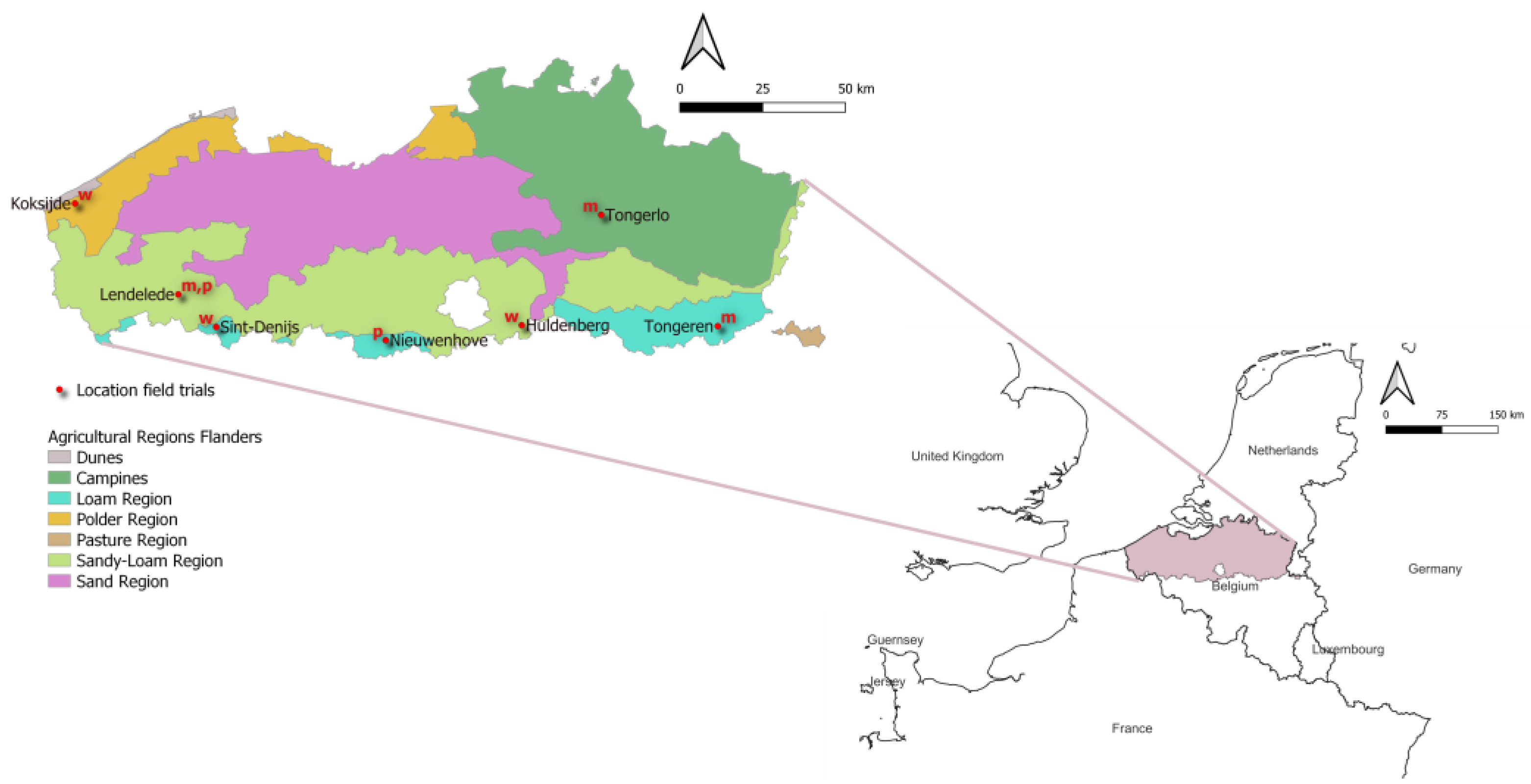
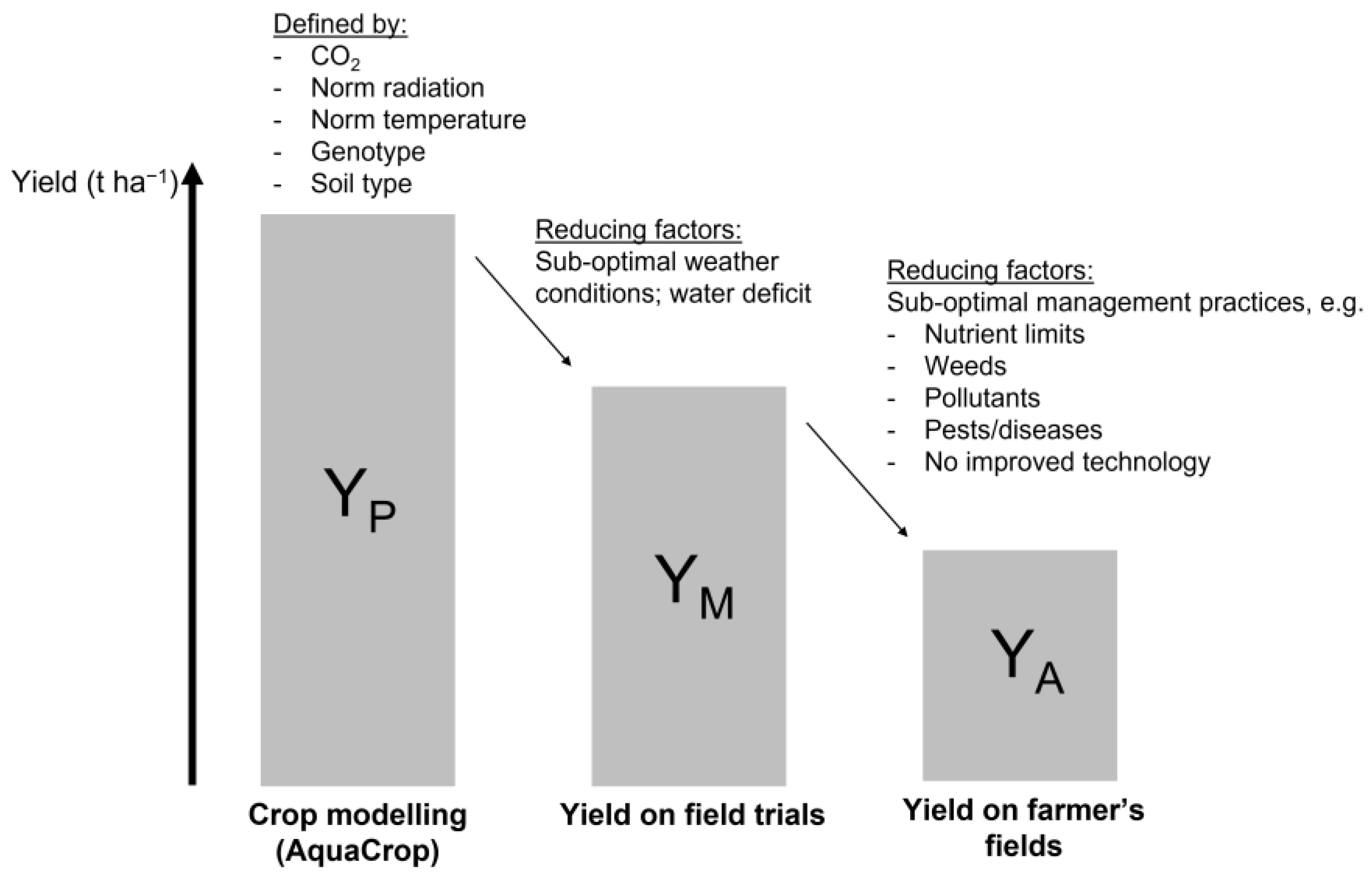

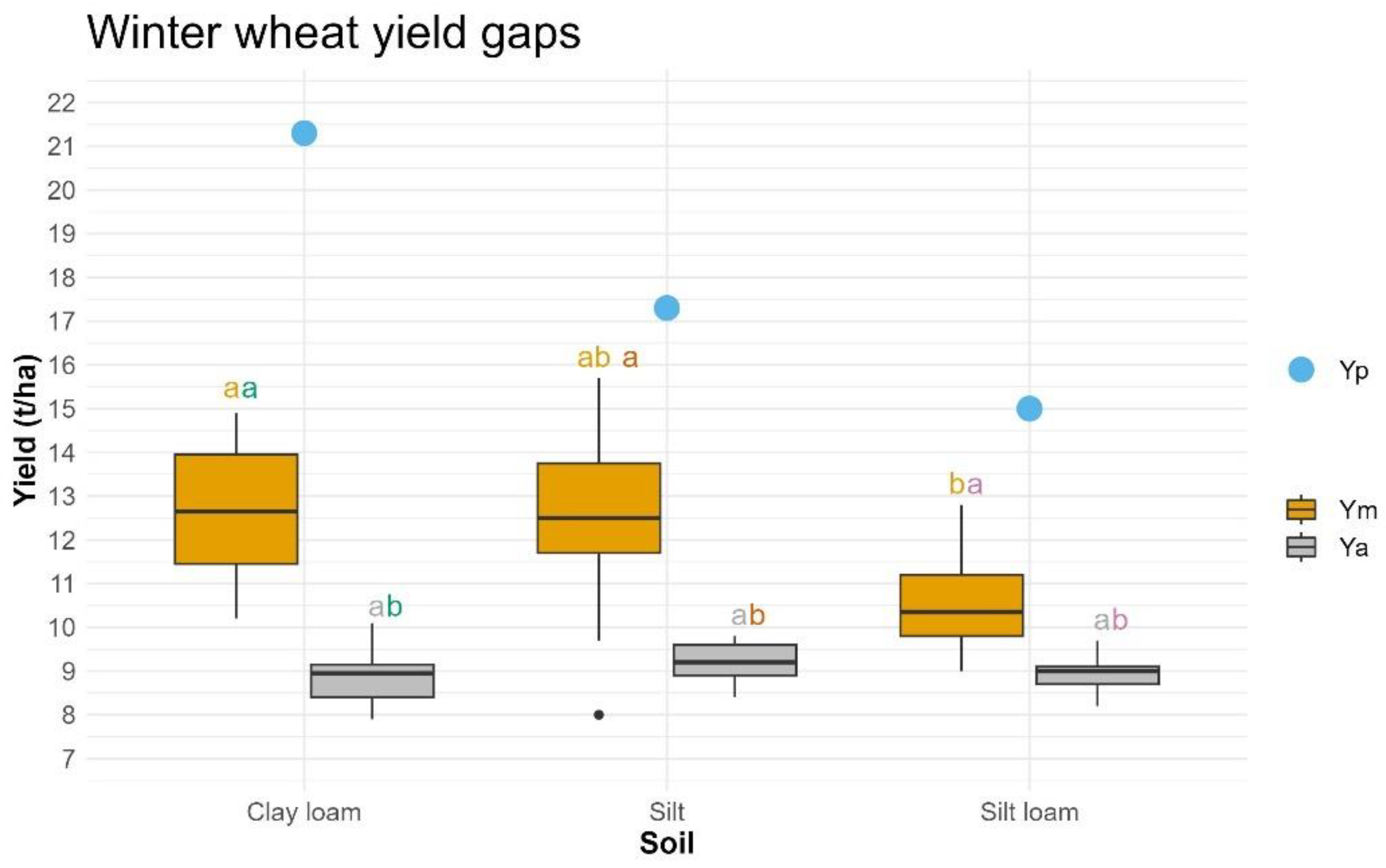
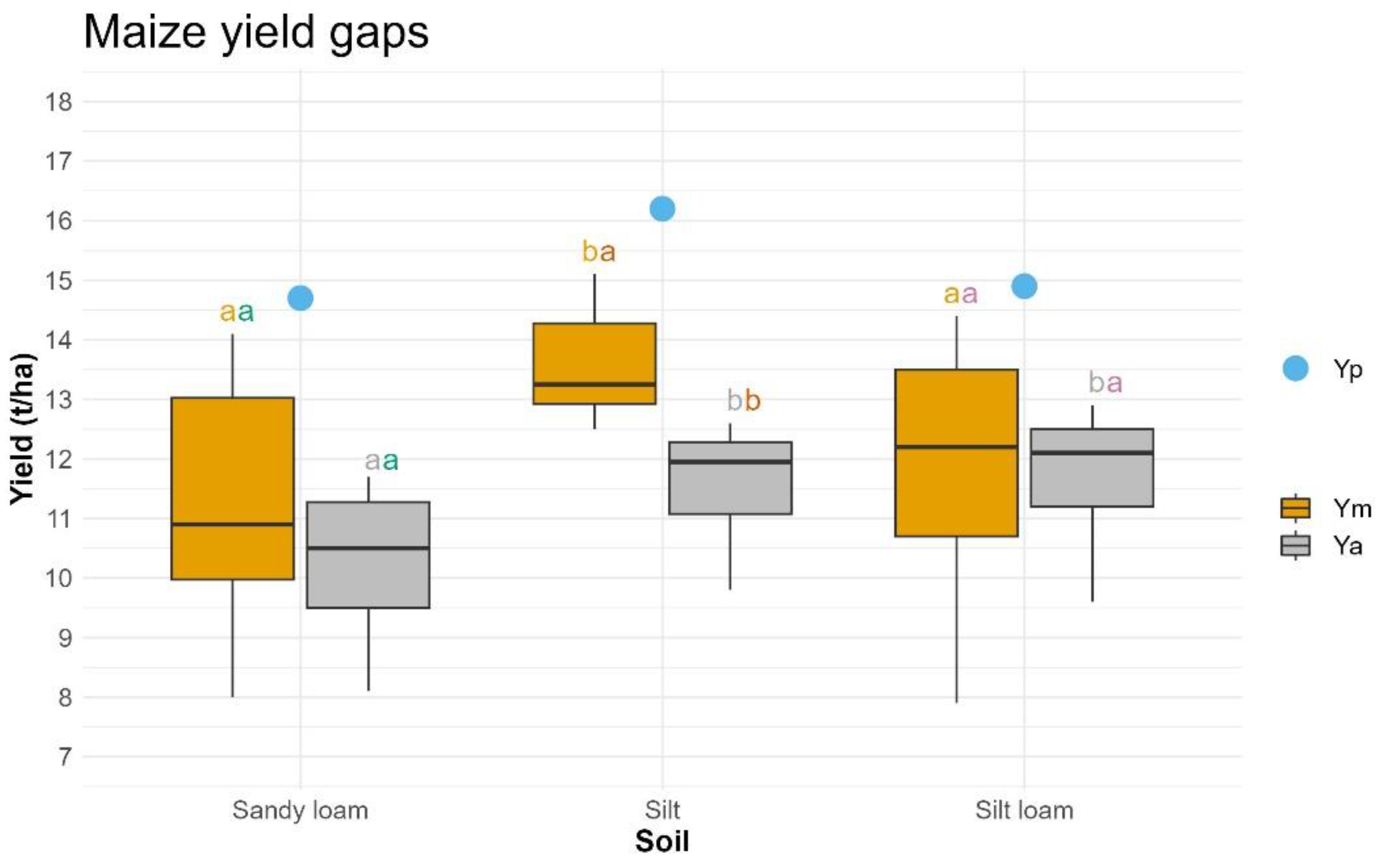
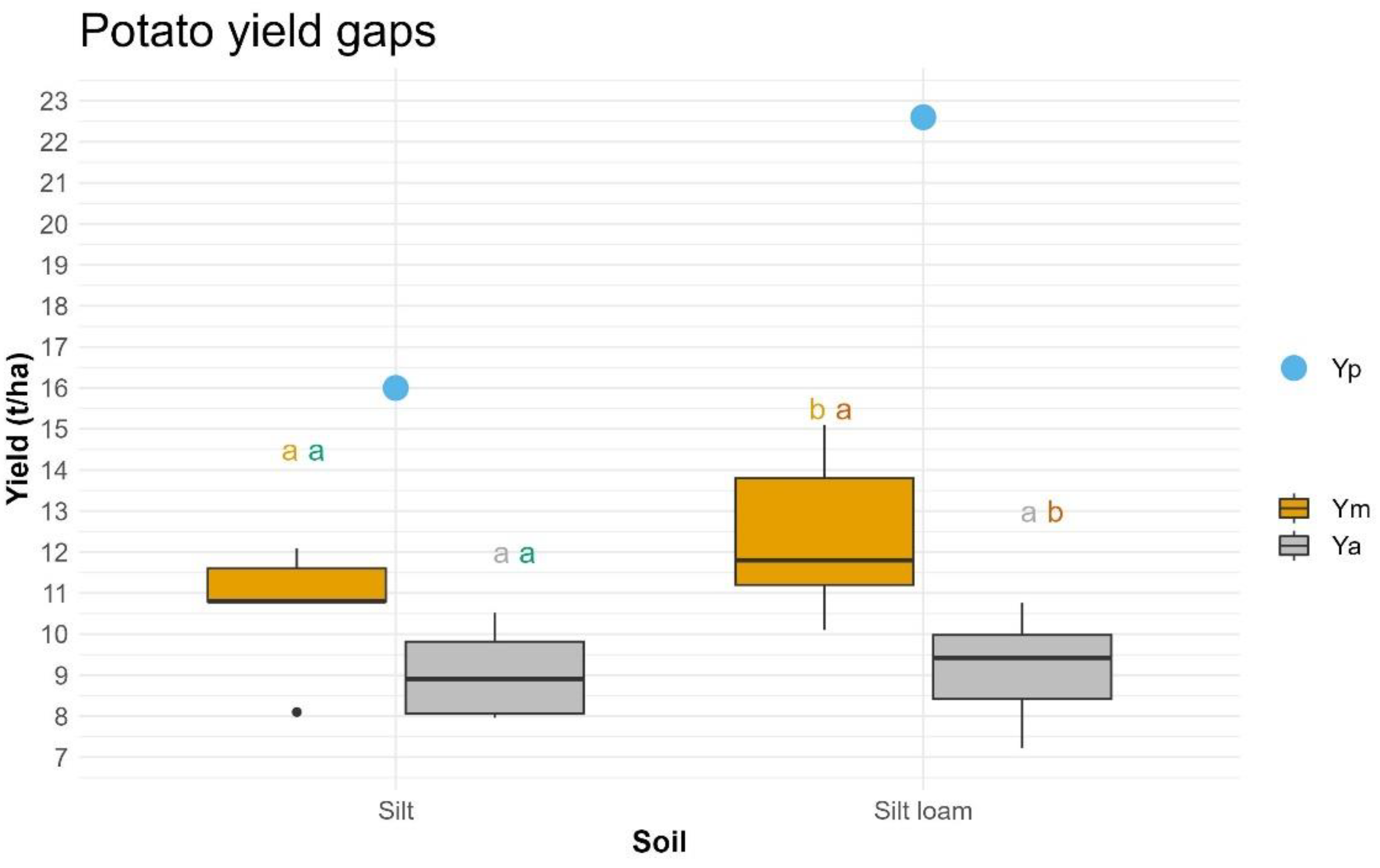
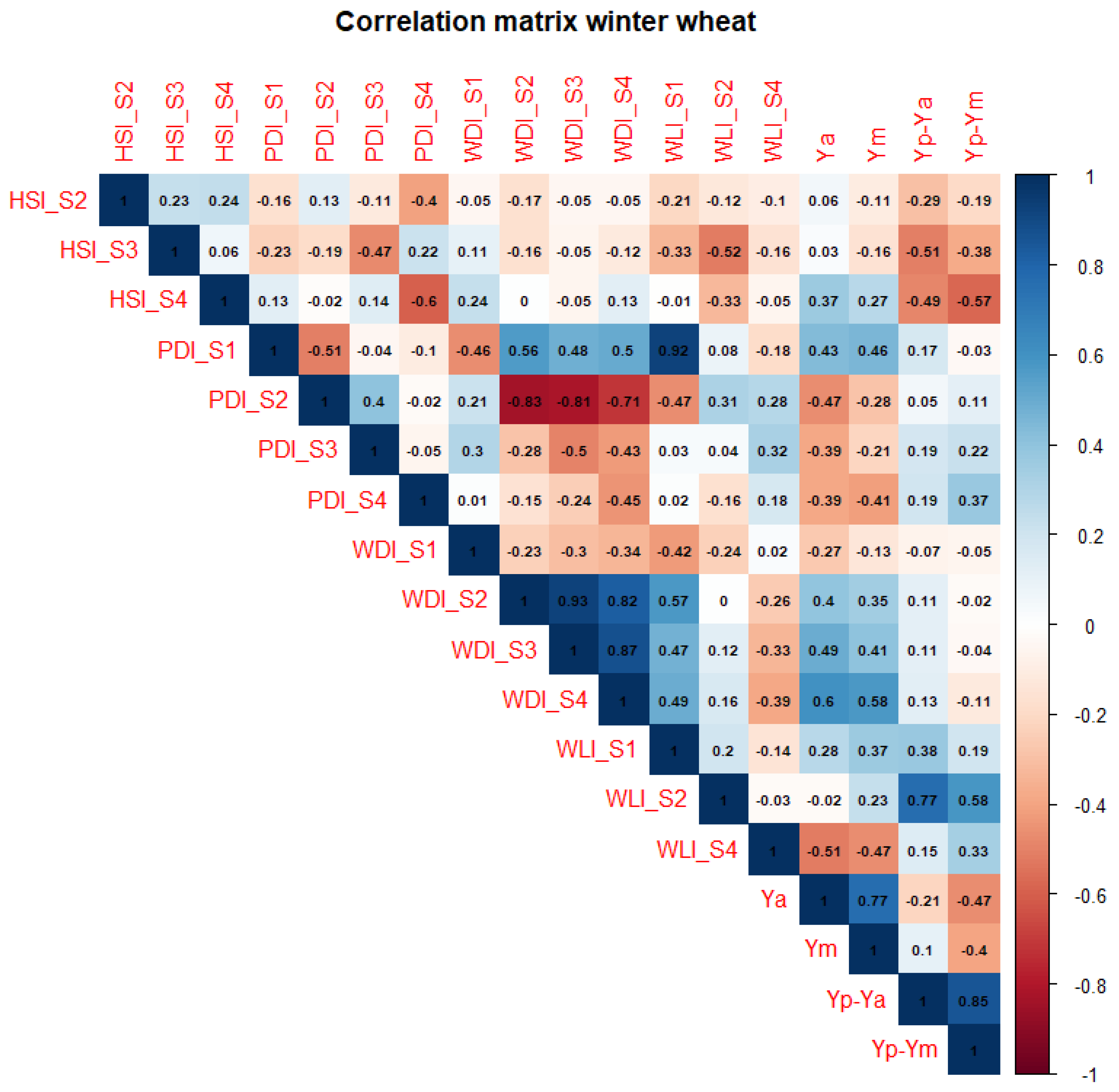
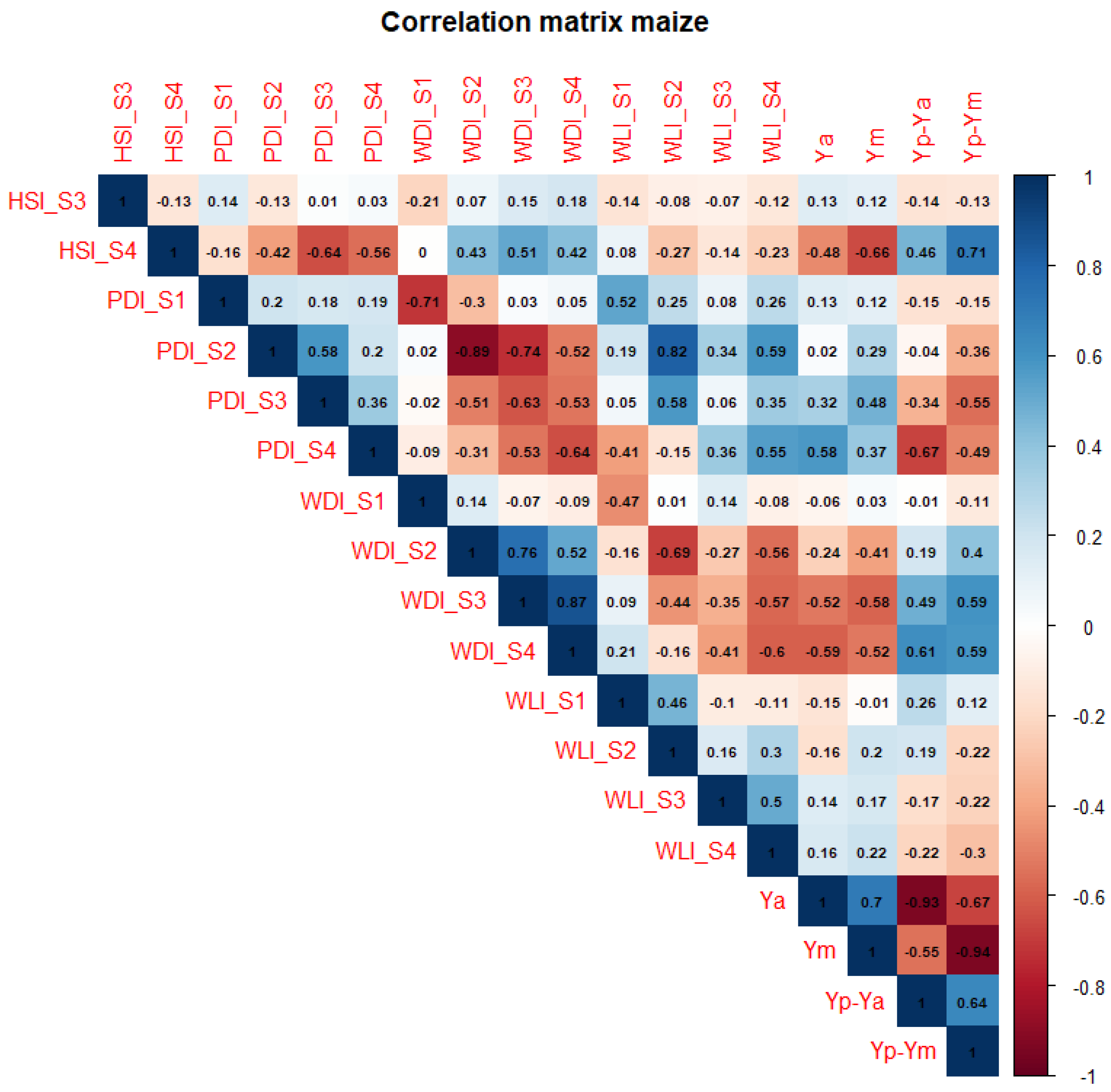
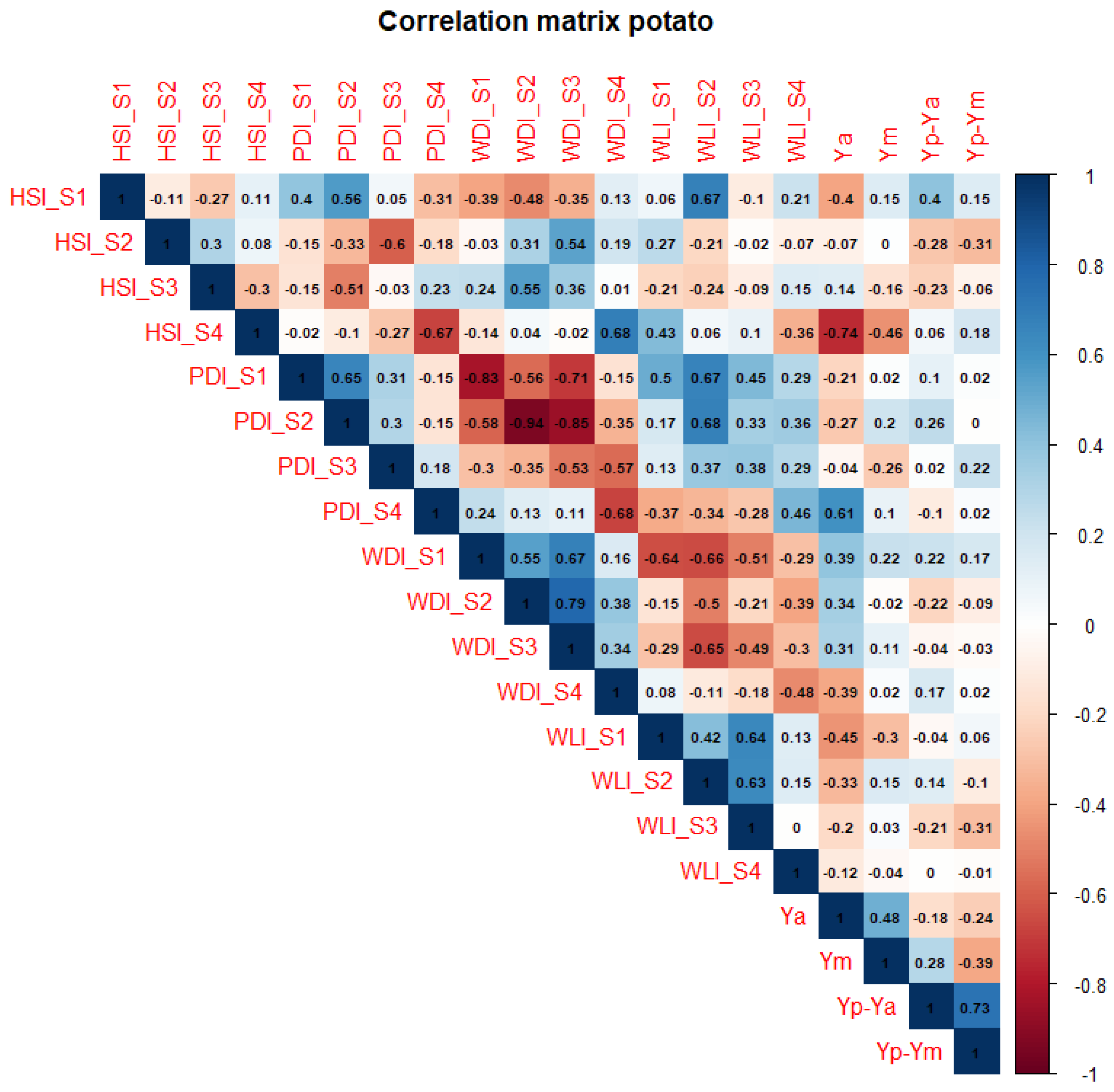
| Method | Weather Condition | Growth Stage | Indicator | Result |
|---|---|---|---|---|
| Region: Japan Years: 1984–2020 Indicators: meteorological indicators What is analyzed: yield penalty (in terms of yield gap) Yield level: regional yield statistics Analysis method: WOFOST for potential yields and Pearson’s correlation test for statistical analysis Reference: [15] | Heat/drought | Flowering | Vapor pressure deficit (VPD); air temperature (Tair); number of rainy days (Rain). | R2 between yield gap and indicators: VPD: 0.07 Tair: 0.25 Rain: −0.09 |
| Grain filling | Vapor pressure deficit (VPD); air temperature (Tair); number of rainy days (Rain). | R2 between yield gap and indicators: VPD: −0.62 Tair: −0.65 Rain: 0.05 | ||
| Region: Europe Years: 1991–2014 Indicators: meteorological indicators and thresholds identified from literature What is analyzed: yield penalty (in terms of reduction from average yield) Yield level: field-level yields (variety trials) Analysis method: linear mixed models Reference: [12] | Heat | Heading | Any day with maximum air temperature (Tmax) > 31 °C in 21-day interval around heading | Range from +10% to −15% from normal, depending on cultivar |
| Heading to maturity | Any day with maximum air temperature (Tmax) > 35 °C | Range from +15% to −8% from normal, depending on cultivar | ||
| Drought | Sowing to heading | Days with ratio of actual to potential evapotranspiration (ETa/ETr) < 0.15 | Range from +15% to −10% from normal, depending on cultivar | |
| Heading to maturity | Days with ratio of actual to potential evapotranspiration (ETa/ETr) < 0.15 | Range from +15% to −5% from normal, depending on cultivar | ||
| Excess rainfall | Sowing to heading | >60 days with water saturated at the field capacity | Range from +10% to −10% from normal, depending on cultivar | |
| Growing season | Any day with +40 mm | Range from +10% to −20% from normal, depending on cultivar | ||
| Low radiation | Sowing to heading | Sum of effective global radiation | Range from +25% to 30%, depending on cultivar | |
| Frost | Growing season | Any day with minimum air temperature (Tmin) < −15 °C. | Range from +5% to −30%, depending on the cultivar | |
| Region: Western Europe Years: 18–75 years depending on country and crop Indicators: meteorological variables What is analyzed: absolute yields Yield level: regional yield statistics Analysis method: yield response curve Reference: [11] | High rainfall | Early vegetative growth (Jan–Feb) | Precipitation (P) (mm day−1) | Low relationship between P and yield |
| Late vegetative growth (Mar–Apr–May) | Precipitation (P) (mm day−1) | Steep yield increase at increasing P until turning point. After this point (2.8 mm day−1), little impact of increasing P on yield | ||
| Flowering + grain filling (Jun–Jul–Aug) | Precipitation (P) (mm day−1) | Slight decreasing in yield at increasing P | ||
| High temperatures | Early vegetative growth (Jan–Feb) | Maximum air temperature (Tmax) (°C) | Steep increase in yield at increasing Tmax (−10 to 5 °C). At turning point (5 °C), steep decrease | |
| Late vegetative growth (Mar–Apr–May) | Maximum air temperature (Tmax) (°C) | Low relationship between Tmax and yield | ||
| Flowering + grain filling (Jun–Jul–Aug) | Maximum air temperature (Tmax) (°C) | Slight decreasing relationship between Tmax and yield | ||
| Region: Germany Years: 1995–2019 Indicators: (agro-)meteorological indicators with thresholds defined based on the 1st and 99th percentile of frequency distribution What is analyzed: yield penalty (in terms of reduction from average yield) Yield level: farm-level yields Analysis method: logarithmic mixed models Reference: [9] | Frost | Early vegetative growth | Minimum air temperature (Tmin) ≤ −12.8 °C | No significant effect on yield |
| Heat | Flowering | Maximum air temperature (Tmax) ≥ 32.6 °C | No significant effect on yield | |
| Drought | Late vegetative growth + flowering | Soil moisture ≤ 14.4% of field capacity. | One drought day reduces yield by 0.36% | |
| Grain filling | Soil moisture ≤ 7.8% of field capacity. | One drought day reduces yield by 0.36% | ||
| Waterlogging | Late vegetative growth + flowering | Soil moisture ≥ 115.3% of field capacity. | One waterlogging day reduces yield by 0.28% | |
| Grain filling | Soil moisture ≥ 111.6% of field capacity. | One waterlogging day reduces yield by 0.32% | ||
| Region: Belgium Years: 1947–2021 Indicators: (agro-)meteorological indicators (percentiles of cumulative probability distribution) What is analyzed: absolute low yields (percentiles of cumulative probability distribution) Yield level: national yield statistics Analysis method: cumulative probability density function Reference: [2] | Low radiation | Growing season | Radiation sum (∑RAD) | 70% of low yields explained |
| Excess rainfall | Flowering | Maximum number of consecutive rainy days (CRDmx); rainfall amount during the maximum number of consecutive rainy days (ACRDmx); sum of precipitation (∑P). | 55% of low yields explained | |
| Combined heat and drought | Growing season | Sum of heat units (∑PHU); water balance deficit (WD); maximum cumulative precipitation deficit (∑(P − 0.5ET0)mx). | 36% of low yields explained | |
| Region: Belgium Years: 1971–2010 Indicators: meteorological indicators (dry/wet day at precipitation lower/higher than 0.2 mm) What is analyzed: absolute low/high yields Yield level: regional yield statistics Analysis method: ANOVA between 10 lowest and 10 highest yields Reference: [13] | Dry and wet spells | Growing season | Number of consecutive wet days (ncwd); total rainfall during wet days over growing season (totrain); number of consecutive dry days (ncdd). | High values for ncwd were most associated with high yields (p < 0.001) |
| Method | Weather Condition | Growth Stage | Indicator | Result |
|---|---|---|---|---|
| Region: France Years: 2000–2013 Indicators: (agro-)meteorological indicators with thresholds defined from literature What is analyzed: absolute low yields (percentiles of cumulative probability distribution) Yield level: regional yield statistics Analysis method: area under Receiver Operating Characteristic (ROC) curve Reference: [10] | Low radiation | Vegetative growth stage | Sum of radiation | Prediction performance of 0.86 for extreme yield loss |
| High temperature | Vegetative growth stage | Maximum air temperature (Tmax) > 35 °C | Prediction performance of 0.86 for extreme yield loss | |
| Low radiation | Flowering | Sum of radiation | Prediction performance of 0.77 for extreme yield loss | |
| High temperature | Flowering | Maximum air temperature (Tmax) > 35 °C | Prediction performance of 0.78 for extreme yield loss | |
| Region: Germany Years: 1995–2019 Indicators: (agro-)meteorological indicators with thresholds defined based on the 1st and 99th percentile of frequency distribution What is analyzed: yield penalty (in terms of reduction from average yield) Yield level: farm-level yields Analysis method: logarithmic mixed models Reference: [9] | Cold temperature | Sowing to emergence | Minimum air temperature (Tmin) ≤ 0.5 °C | No significant effect on yield |
| Heat | Vegetative growth and flowering | Maximum air temperature (Tmax) ≥ 33.7 °C | No significant effect on yield | |
| Drought | Emergence and vegetative growth | Soil moisture ≤ 33.5% of field capacity. | One drought day reduces yield by 0.52% | |
| Flowering and grain filling | Soil moisture ≤ 8.7% of field capacity | One drought day reduces yield by 0.69% | ||
| Waterlogging | Emergence and vegetative growth | Soil moisture ≥ 118.7% of field capacity. | No significant effect on yield | |
| Flowering and grain filling | Soil moisture ≥ 112.7% of field capacity. | No significant effect on yield | ||
| Region: Belgium Years: 1947–2012 Indicators: (agro-)meteorological indicators (percentiles of cumulative probability distribution) What is analyzed: absolute low yields (percentiles of cumulative probability distribution) Yield level: national yield statistics Analysis method: cumulative probability density function Reference: [2] | Combined low temperature and excess rainfall | Early vegetative growth | Sum of heat units (∑PHU); sum of precipitation (∑P). | 79% of low yields explained |
| Low radiation | Growing season | Sum of radiation (∑RAD) | 64% of low yields explained | |
| Excess rainfall | Harvest | Maximum number of consecutive rainy days (CRDmx); rainfall amount during the maximum number of consecutive rainy days (ACRDmx); sum of precipitation (∑P). | 29% of low yields explained | |
| Combined heat and drought | Flowering | Sum of heat units (∑PHU); water balance deficit (WD); maximum cumulative precipitation deficit (∑(P − 0.5ET0)mx). | 21% of low yields explained | |
| Region: Belgium Years: 1971–2010 Indicators: meteorological indicators (dry/wet day at precipitation lower/higher than 0.2 mm) What is analyzed: absolute low/high yields Yield level: regional yield statistics Analysis method: ANOVA between 10 lowest and 10 highest yields Reference: [13] | Dry and wet spells | Growing season | Number of consecutive wet days (ncwd); total rainfall during wet days over growing season (totrain); number of consecutive dry days (ncdd). | High values for totrain were most associated with high yields (p < 0.001) |
| Method | Weather Condition | Critical Stage | Indicator | Results |
|---|---|---|---|---|
| Region: Belgium Years: 1947–2012 Indicators: (agro-)meteorological indicators (percentiles of cumulative probability distribution) What is analyzed: absolute low yields (percentiles of cumulative probability distribution) Yield level: national yield statistics Analysis method: cumulative probability density function Reference: [2] | Combined drought and heat | Tuber set | Sum of heat units (∑PHU); water balance deficit (WD); maximum cumulative precipitation deficit (∑(P − 0.5ET0)mx). | 79% of low yields explained |
| Waterlogging | Planting and Harvest | Waterlogging index (WLt). | 43% of low yields explained | |
| Region: Netherlands Years: 1994–2021 Indicators: meteorological variables (5th upper and lower percentiles of cumulative probability distribution) What is analyzed: absolute low yields (5th upper and lower percentiles of cumulative probability distribution) Yield level: regional yield statistics Analysis method: probability distributions Reference: [14] | Drought | Growing period | Sum of precipitation deficit (∑(ET0-rain)). | 13% of low yields explained |
| Waterlogging | Harvest | Sum of precipitation (∑P). | 73% of low yields explained | |
| Region: Belgium Years: 1971–2010 Indicators: meteorological indicators (dry/wet day at precipitation lower/higher than 0.2 mm) What is analyzed: absolute low/high yields Yield level: regional yield statistics Analysis method: ANOVA between 10 lowest and 10 highest yields Reference: [13] | Dry and wet spells | Growing season | Number of consecutive wet days (ncwd); total rainfall during wet days over growing season (totrain); number of consecutive dry days (ncdd). | High values for totrain were most associated with high yields (p < 0.001) |
| Winter Wheat | |||||||
| Soil Type | Observed Years | Sowing Density Range (Mean) (Grains/m2) | Sowing DateRange | Flowering Date Range | Harvesting Date Range | HI0 Range (Mean) | |
| Clay loam | 2011–2012, 2014–2021 | 350–475 (400) | 17 Oct.–12 Dec. | 30 May–7 Jun. | 26 Jul.–21 Aug. | 41–86 (67) | |
| Silt | 2011–2012, 2014–2021 | 300–350 (325) | 13 Oct.–7 Nov. | 26 May–4 Jun. | 18 Jul.–10 Aug. | 31–70 (57) | |
| Silt loam | 2016–2021 | 250–350 (350) | 25 Oct.–21 Nov. | 28 May–6 Jun. | 19 Jul.–15 Aug. | 36–60 (58) | |
| Grain maize | |||||||
| Soil type | Observed years | Sowing density range (mean) (grains/ha) | Sowing daterange | Flowering date range | Harvesting date range | HI0 range (mean) | |
| Sandy loam | 2014–2021 | 97,324 | 24 Apr.–29 Apr. | 10 Jul.–23 Jul. | 19 Sep.–23 Nov. | 33–45 (38) | |
| Silt | 2011–2020 | 8888–100,000 (95,619) | 20 Apr.–8 May | 10 Jul.–23 Jul. | 19 Sep.–15 Nov. | 42–48 (45) | |
| Silt loam | 2011–2012, 2015, 2017–2021 | 96,000–100,000 (100,000) | 20 Apr.–29 May | 10 Jul.–23 Jul. | 19 Sep.–9 Nov. | 27–48 (44) | |
| Late potato | |||||||
| Soil type | Observed years | Plant density (plants/ha) | Sowing date range | Date of tuber set * | Haulm killing date range | Harvesting date range | HI0 range |
| Silt | 2014–2020 | 40,000 | 7 Apr.–25 Apr. | 21 Jun. | 7 Sep.–24 Sep. | 29 Sep.–24 Oct. | 33–57 (43) |
| Silt loam | 2011–2019 | 40,000 | 19 Apr.–28 May | 21 Jun. | 2 Sep.–6 Oct. | 19 Sep.–13 Nov. | 42–77 (66) |
| Crop | Phenological Stage | BBCH | Topt (°C) | Tmax (°C) |
|---|---|---|---|---|
| Winter wheat | Emergence | 00–09 | 22.0 | 32.7 |
| Vegetative growth | 10–49 | 22.0 | 32.7 | |
| Flowering | 51–69 | 21.0 | 31.0 | |
| Grain filling and ripening | 71–99 | 20.7 | 35.4 | |
| Maize | Emergence | 00–09 | 29.3 | 40.2 |
| Vegetative growth | 10–39 | 28.3 | 39.2 | |
| Flowering | 51–69 | 30.5 | 37.3 | |
| Grain filling and ripening | 71–99 | 26.4 | 36.0 | |
| Potato | Emergence | 00–09 | 18.0 | 27.0 |
| Vegetative growth | 10–39 | 18.0 | 27.0 | |
| Tuber setting | 40 | 20.0 | 30.0 | |
| Tuber development | 41–49 | 20.0 | 30.0 |
| Crop | Y-Var | Variables Significantly Correlated (Alpha = 0.1) |
|---|---|---|
| Winter wheat | YP-YM | HSI_S3, HSI_S4, PDI_S4, WLI_S2, WLI_S4 |
| YP-YA | HSI_S3, HSI_S4, WLI_S1, WLI_S2 | |
| YM | PDI_S1, PDI_S4, WDI_S2, WDI_S3, WDI_S4, WLI_S1, WLI_S4 | |
| YA | HSI_S4, PDI_S1, PDI_S2, PDI_S3, PDI_S4, WDI_S2, WDI_S3, WDI_S4, WLI_S4 | |
| Maize | YP-YM | HSI_S4, PDI_S2, PDI_S3, PDI_S4, WDI_S2, WDI_S3, WDI_S4 |
| YP-YA | HSI_S4, PDI_S3, PDI_S4, WDI_S3, WDI_S4 | |
| YM | HSI_S4, PDI_S3, PDI_S4, WDI_S2, WDI_S3, WDI_S4 | |
| YA | HSI_S4, PDI_S4, WDI_S3, WDI_S4 | |
| Potato | YP-YM | / |
| YP-YA | HSI_S1 | |
| YM | HSI_S4 | |
| YA | HIS_S1, HSI_S4, PDI_S4, WDI_S1, WDI_S4, WLI_S1 |
| Model Type | Goodness-of-Fit Indicators | |||||
|---|---|---|---|---|---|---|
| Without soil | Yield (gap) | R2 | AIC | RMSE | MAE | d |
| YP-YM | 0.85 | 104.97 | 0.98 | 0.77 | 0.96 | |
| YP-YA | 0.96 | 72.42 | 0.53 | 0.39 | 0.99 | |
| YM | 0.61 | 114.70 | 1.19 | 0.95 | 0.87 | |
| YA | 0.71 | 62.32 | 0.43 | 0.35 | 0.91 | |
| With soil | Yield (gap) | R2 | AIC | RMSE | MAE | d |
| YP-YM | 0.92 | 92.68 | 0.72 | 0.57 | 0.98 | |
| YP-YA | 0.98 | 52.16 | 0.33 | 0.25 | 1.00 | |
| YM | 0.86 | 92.68 | 0.72 | 0.57 | 0.96 | |
| YA | 0.83 | 52.16 | 0.33 | 0.25 | 0.95 | |
| Model Type | Goodness-of-Fit Indicators | |||||
|---|---|---|---|---|---|---|
| Without soil | Yield (gap) | R2 | AIC | RMSE | MAE | d |
| YP-YM | 0.76 | 97.47 | 0.81 | 0.69 | 0.93 | |
| YP-YA | 0.79 | 97.85 | 0.82 | 0.60 | 0.94 | |
| YM | 0.76 | 105.50 | 0.94 | 0.80 | 0.93 | |
| YA | 0.84 | 93.41 | 0.75 | 0.60 | 0.96 | |
| With soil | Yield (gap) | R2 | AIC | RMSE | MAE | d |
| YP-YM | 0.78 | 99.38 | 0.78 | 0.63 | 0.94 | |
| YP-YA | 0.92 | 77.11 | 0.52 | 0.42 | 0.98 | |
| YM | 0.83 | 99.38 | 0.78 | 0.63 | 0.95 | |
| YA | 0.93 | 77.11 | 0.52 | 0.42 | 0.98 | |
| Model Type | Goodness-of-Fit Indicators | |||||
|---|---|---|---|---|---|---|
| Without soil | Yield (gap) | R2 | AIC | RMSE | MAE | d |
| YP-YM | 0.95 | 75.75 | 0.69 | 0.45 | 0.99 | |
| YP-YA | 0.99 | 48.60 | 0.34 | 0.24 | 1.00 | |
| YM | 0.97 | 61.20 | 0.47 | 0.29 | 0.99 | |
| YA | 0.99 | 8.75 | 0.12 | 0.08 | 1.00 | |
| With soil | Yield (gap) | R2 | AIC | RMSE | MAE | d |
| YP-YM | 0.98 | 58.26 | 0.41 | 0.27 | 1.00 | |
| YP-YA | 1.00 | 10.59 | 0.12 | 0.08 | 1.00 | |
| YM | 0.98 | 58.26 | 0.41 | 0.27 | 0.99 | |
| YA | 0.99 | 10.59 | 0.12 | 0.08 | 1.00 | |
Disclaimer/Publisher’s Note: The statements, opinions and data contained in all publications are solely those of the individual author(s) and contributor(s) and not of MDPI and/or the editor(s). MDPI and/or the editor(s) disclaim responsibility for any injury to people or property resulting from any ideas, methods, instructions or products referred to in the content. |
© 2023 by the authors. Licensee MDPI, Basel, Switzerland. This article is an open access article distributed under the terms and conditions of the Creative Commons Attribution (CC BY) license (https://creativecommons.org/licenses/by/4.0/).
Share and Cite
Vanongeval, F.; Gobin, A. Adverse Weather Impacts on Winter Wheat, Maize and Potato Yield Gaps in northern Belgium. Agronomy 2023, 13, 1104. https://doi.org/10.3390/agronomy13041104
Vanongeval F, Gobin A. Adverse Weather Impacts on Winter Wheat, Maize and Potato Yield Gaps in northern Belgium. Agronomy. 2023; 13(4):1104. https://doi.org/10.3390/agronomy13041104
Chicago/Turabian StyleVanongeval, Fien, and Anne Gobin. 2023. "Adverse Weather Impacts on Winter Wheat, Maize and Potato Yield Gaps in northern Belgium" Agronomy 13, no. 4: 1104. https://doi.org/10.3390/agronomy13041104






